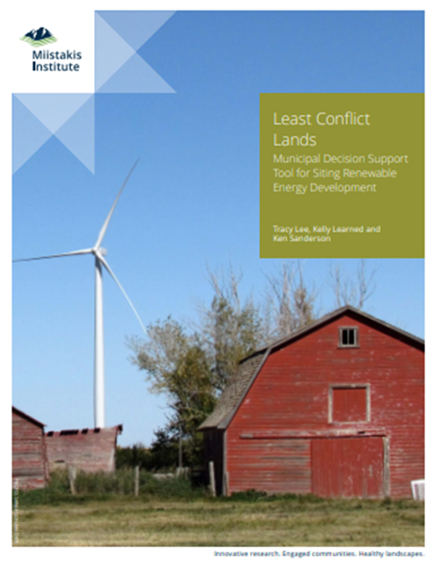Lee, T., Learned, K., and Sanderson, K. (2018). Least conflict lands: Municipal decision support tool for siting renewable energy development. Calgary, AB: Miistakis Institute.
Executive Summary
Alberta is investing in renewables as a key strategy to reduce greenhouse gas emissions. Alberta’s Climate Leadership Plan aims to generate 30% of electricity from renewable sources by 2030. A key challenge is to manage land use issues associated with the rapid growth in energy projects in the province. Many land use impacts can be addressed through proper siting and avoidance of areas important to ecology, agriculture or culture and scenic resources. A key lesson from other jurisdictions supporting renewable energy development is the importance of siting renewable energy development to reduce impacts to other land uses.
The Miistakis Institute partnered with the County of Newell and Wheatland County to develop a least conflict lands decision support tool to inform planning of renewable energy development. This process and decision support tool was modeled after the Least Conflict Lands for Solar PV development in the San Joaquin Valley of California developed by Conservation Biology Institute, UC Berkeley School of Law, and Terrell Watt Planning Consultants.
In the County of Newell and Wheatland County this process aimed to identify areas for utility scale wind and solar developments while avoiding important agriculture, ecology and cultural and scenic resources at a municipal scale. The process was completed in six months, engaged 37 stakeholders including representatives from municipal staff and council, provincial government, irrigation districts and NGO’s. The process resulted in a series of spatial models that identified high value agriculture, ecology and cultural and scenic resources. In addition, industry identified opportunity areas for wind and solar development. The resulting spatial models identify areas of lowest ecology, agriculture and culture and scenic values that represent the best opportunity areas for wind and solar development.






